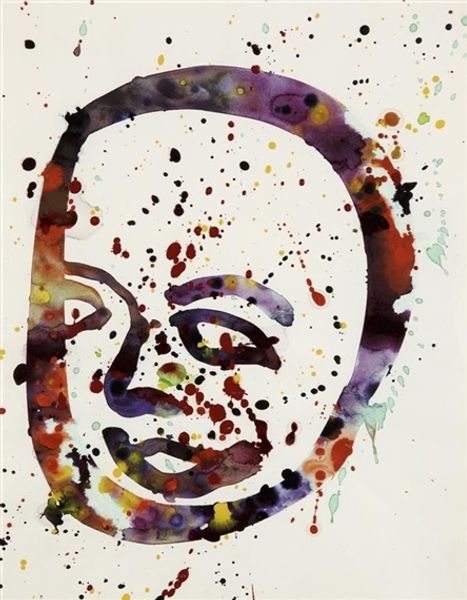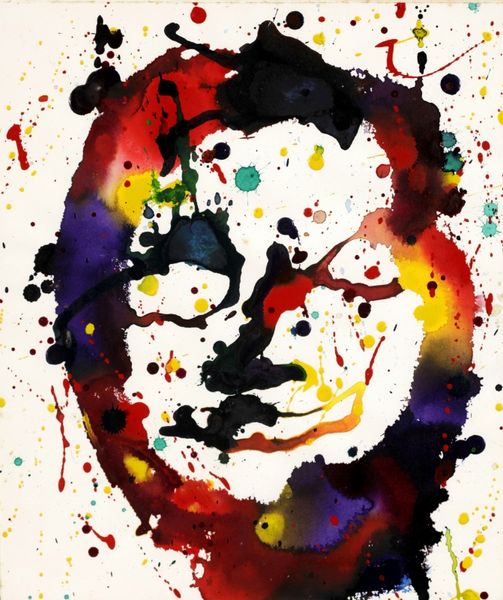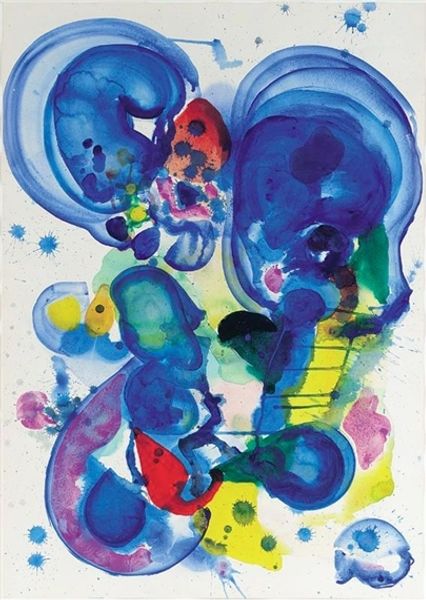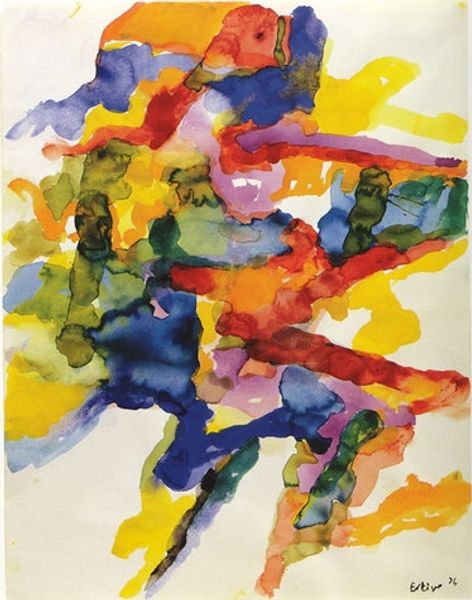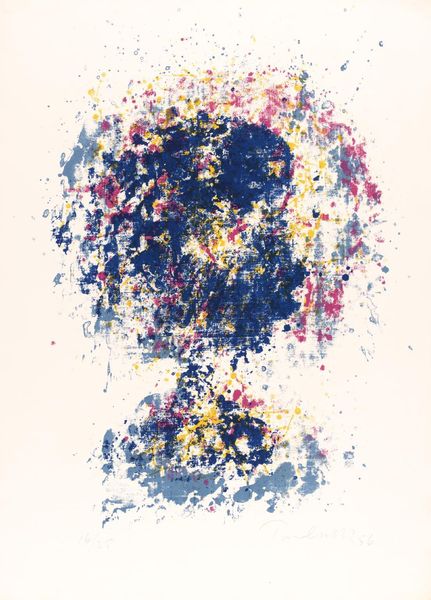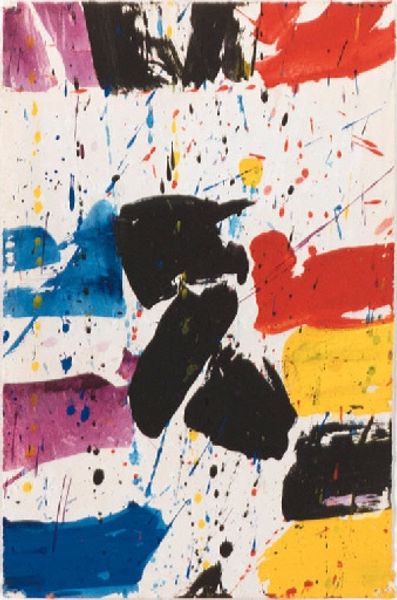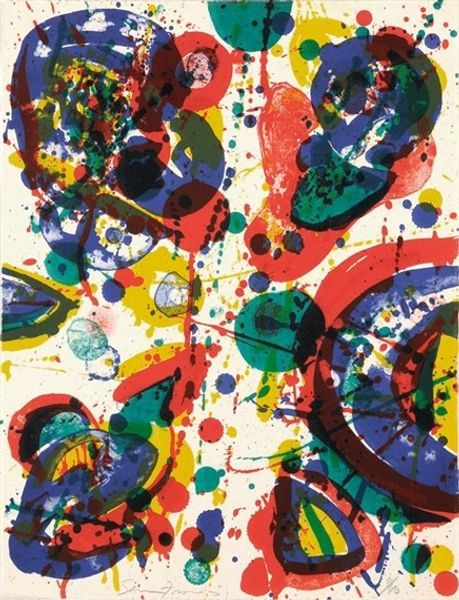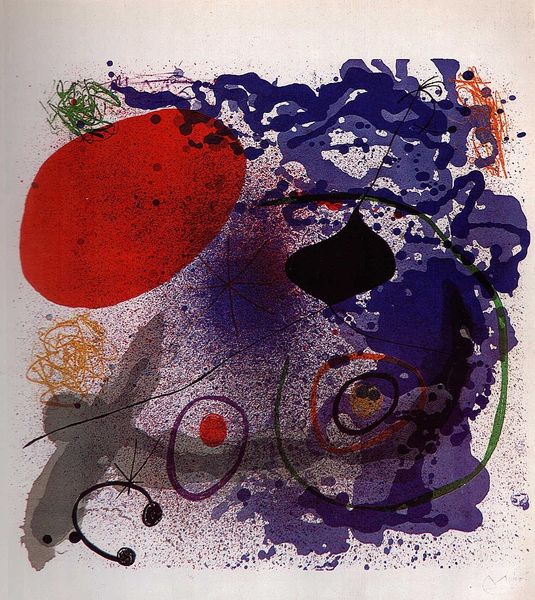
Copyright: 2012 Sam Francis Foundation, California / Artists Rights Society (ARS), NY
Editor: This is an untitled self-portrait by Sam Francis, created in 1976, using watercolor. The first thing that strikes me is its energy. What do you see in this piece? Curator: I see a potent intersection of identity and form. Francis, working within the legacy of Abstract Expressionism, deconstructs the traditional self-portrait. Instead of fixed representation, we see fluid, vibrant color. It is a form on the verge of dissolving; isn’t that interesting for a self-portrait? What aspects of "self" is Francis representing here? Editor: That's interesting. I hadn't considered how abstract it is as a self-portrait. Are you saying that by depicting the self in an incomplete form he might be reflecting on unstable concepts of identity? Curator: Precisely. The colors are joyous, celebratory even, but consider the context: 1976. How might the political and social upheavals of the previous decade—civil rights, feminism, anti-war protests—have influenced an artist exploring selfhood? Perhaps Francis is less interested in celebrating an individual self, and more so revealing an unstable concept of 'selfhood'. Editor: That’s a powerful interpretation! I was so focused on the bright colours and how they felt celebratory that I totally overlooked that. Curator: Art often functions that way, creating these layered meanings. Thinking about this "self-portrait" as a sign of its times really highlights how identity is formed in conversation with broader cultural moments. What did you make of this conversation? Editor: Definitely got me thinking about abstraction in new ways – it’s not just about forms but ideas about identity and the way we express them.
Comments
No comments
Be the first to comment and join the conversation on the ultimate creative platform.
